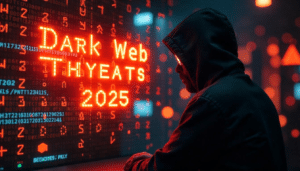In 2025, having a strong cybersecurity plan is no longer optional—imperative, one might say, due to the increasing sophistication of cyber threats. Security Information and Event Management (SIEM) is a key element of this approach The definition, significance, and ways in which open source SIEM products help businesses maintain security and compliance are all covered in this article.
We also show how i-Soft’s managed Security Operations Center (SOC) services, which combine open-source flexibility with professional oversight, may improve your protection approach.
As organizations increasingly seek cost-effective and flexible solutions, open-source SIEM software has gained traction. We will also highlight the benefits of partnering with a specialized cybersecurity services company like i-Soft, which offers managed Security Operations Center (SOC) services to enhance security posture.
What is open source SIEM?
A community-developed security technology called open source SIEM (Security Information and Event Management) is used to track, identify, and react to cyber-threats instantly. Open source products are free to use, configurable, and constantly enhanced by a global community of developers and cybersecurity experts, in contrast to commercial SIEM systems.
We also show how managed Security Operations Center (SOC) services, which combine open-source flexibility with professional oversight, may improve your protection approach.
🔑 Key Features of Open Source SIEM
- Cost-Effectiveness: Organizations can utilize powerful security tools without incurring hefty licensing fees. Ideal for startups and SMBs.
- Customization: Users can modify the software to suit their business security requirements, making it adaptable to flexible and complex environments.
- Community Support: Open source projects often have active communities that participate in development, documentation, and troubleshooting. These are common in open source projects.
- Transparency: Being open source allows for greater scrutiny by users and security experts, potentially leading to more secure software.
Popular Open Source SIEM Solutions (Updated for 2025)
Multiple open-source SIEM options are available and popular in the cybersecurity landscape. In addition to being affordable, open-source SIEM products are scalable and proven. The following are some of the most dependable solutions that will be in use in 2025.
- Wazuh: A security platform that combines SIEM and endpoint protection, Wazuh offers features like log analysis, intrusion detection, and compliance reporting. It’s designed to scale with organization needs and integrates well with other security tools. Additionally, it’s capable of doing file integrity monitoring and vulnerability detection.
- Security Onion: This is a free and open-source Linux distribution for intrusion detection, network monitoring, and log management. It includes a suite of tools for security monitoring and analysis and capable of doing perfect packet identification and in-depth packet inspection.
- AlienVault OSSIM: Although not as comprehensive as others, OSSIM provides basic SIEM functionalities and integrates with various threat intelligence sources, making it a suitable option for SMBs and startups.
Pro Tip for 2025: Due to the rise in supply-chain and ransomware attacks (such as the Cencora/PharMerica hack in early 2025), open source SIEM products offer shorter detection cycles and community-patched threat detection algorithms, frequently outperforming those of commercial manufacturers.
The Role of SIEM in Cyber Security Services
Modern security strategies depend primarily on Security Information and Event Management (SIEM) systems, which are much more than just software tools. SIEM is a key component of a solid cyber-security infrastructure at i-Soft.
SIEM solutions play a crucial role in identifying anomalies and potential threats by aggregating data from various sources, including:
Integrated Presence SIEM collects logs from servers, cloud platforms, firewalls, endpoints, databases,etc. Security personnel may detect undetected risks that might otherwise go unreported thanks to this unified representation.
Why SIEM is Mission-Critical
- Servers
- Network devices
- Domain controllers
- Security appliances
With advanced analytics and machine learning capabilities, modern SIEM systems can correlate events and identify patterns that indicate security incidents, thereby improving detection rates and response times.
Compliance Management: That Secret Power about SIEMance Management
In the highly restricted world of today, compliance and regulations like GDPR, HIPAA, and PCI-DSS is a necessity to the world. This is where SIEM performs well, quietly but effectively. By employing open-source SIEM tools in ways that meet all auditing standards, we at i-Soft can help companies in bridging the security and compliance difference.
- Automated Reporting: SIEM systems can generate reports required for compliance audits, ensuring that organizations meet regulatory standards without extensive manual effort.
- Event Logging: Compliance frameworks often require detailed logging of security events. SIEM solutions maintain comprehensive logs that can be reviewed and audited.
- Real-Time Alerts: By monitoring for violations and anomalies, SIEM systems can provide real-time alerts about potential compliance issues, enabling organizations to address them proactively.
How Open Source SIEM Helps in Data Compliance
Open source SIEM solutions offer unique advantages that can significantly enhance an organization’s compliance posture.
Flexibility in Data Management
Organizations can adjust how they collect, store, and analyze data, ensuring they meet specific compliance requirements tailored to their industry. The ability to customize the SIEM system allows teams to implement necessary controls and logging practices.
Cost-Effective Compliance Solutions
Many organizations, particularly small to medium-sized enterprises (SMEs), find the costs of proprietary SIEM solutions prohibitive. Open source options provide a more budget-friendly alternative, allowing these businesses to implement robust security measures that also meet compliance needs.
Community-Driven Enhancements
The collaborative nature of open source projects means that security enhancements and compliance features can be developed and shared rapidly within the community. Organizations can benefit from the collective knowledge and innovation of a global network of cybersecurity professionals.
Integration with Other Tools
Open source SIEM solutions often integrate seamlessly with other cybersecurity tools, enhancing overall security architectures. This interoperability can be crucial for compliance, as organizations may need to use multiple tools to meet diverse regulatory requirements.
Conclusion
For organizations aiming to improve their cybersecurity posture in a dynamic threat landscape, open-source SIEM services serve as a robust, economical substitute. Even large as well as small businesses can benefit from solutions like Wazuh SIEM and Security Onion, which offer scalable log analysis, real-time alerts, and threat detection without the high expenditures of proprietary systems. These tools can be integrated into a comprehensive defense strategy when combined with managed SOC services and expert cybersecurity services, such as those offered by i-Soft. Open-source platforms offer the flexibility, transparency, and community support critical to staying ahead of cyber risks while ensuring SIEM for compliance, whatever your objectives—better visibility, regulatory compliance, or cost-effective SIEM solutions.



